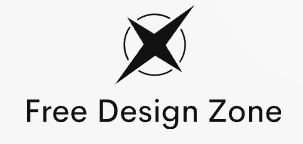Introduction
In today’s digital-first world, the boundary between art and technology has never been more blurred. At this intersection, graphic design and web design stand as two of the most influential disciplines shaping our visual experiences. From the moment you check your phone in the morning to the billboards you pass on your commute, design influences virtually every aspect of modern life.
Both fields have undergone remarkable transformations in recent decades, evolving from relatively simple practices into complex, multidisciplinary professions that require both creative vision and technical expertise. Whether you’re considering a career in design, working with designers on projects, or simply curious about the forces shaping our visual culture, understanding these twin pillars of visual communication is invaluable.
The Essence of Graphic Design
Beyond Pretty Pictures
Graphic design is far more than creating aesthetically pleasing images—it’s a sophisticated form of visual problem-solving. At its core, graphic design translates complex ideas into digestible visual formats that inform, persuade, or inspire specific actions.
A skilled graphic designer combines artistic sensibility with strategic thinking to convey messages that resonate with particular audiences. This might involve designing a logo that captures a company’s values, creating packaging that stands out on crowded shelves, or developing infographics that make complex data accessible.
The Building Blocks of Graphic Design
Understanding graphic design requires familiarity with its fundamental elements:
Typography: More than just selecting fonts, typography involves the art of arranging type to make written language legible, readable, and visually appealing. The right typography can evoke specific emotions and time periods, establish hierarchy, and guide the eye through content.
Color Theory: Colors carry psychological and cultural associations that designers leverage to create specific moods and reactions. Strategic color choices can signal trustworthiness (blues), stimulate appetite (reds), or suggest sustainability (greens).
Composition: How elements are arranged within a space dramatically affects how viewers process information. Principles like balance, contrast, emphasis, and unity help designers create compositions that communicate effectively.
Visual Elements: From photography to illustration, iconography to texture, the visual components of design work together to reinforce messages and create memorable impressions.
Web Design: Where Functionality Meets Aesthetics
The Evolution of Web Design
The web has transformed dramatically since its text-heavy beginnings in the early 1990s. What began as simple HTML pages with minimal styling has evolved into immersive, interactive experiences across multiple devices.
Early websites featured limited layouts, minimal graphics, and text-dominant designs. The mid-2000s saw the rise of Flash, introducing animation and interactivity but often at the expense of usability and accessibility. Today’s web design embraces responsive approaches that adapt to different screen sizes while prioritizing speed, accessibility, and user experience.
The Web Design Ecosystem
Modern web design encompasses several interconnected disciplines:
User Interface (UI) Design: Focuses on the visual aspects of digital products, including layouts, buttons, forms, and all interactive elements users engage with.
User Experience (UX) Design: Takes a broader view of how users interact with digital products, considering factors like information architecture, user flows, and overall satisfaction.
Front-End Development: Involves translating design mockups into functional websites using HTML, CSS, and JavaScript.
Responsive Design: Ensures websites function optimally across devices, from desktop computers to smartphones and tablets.
Accessibility: Makes websites usable by people with diverse abilities, including those with visual, auditory, motor, or cognitive impairments.
Where Graphic and Web Design Diverge
Though related, graphic and web design differ in crucial ways that affect how practitioners approach their work:
Medium: Graphic design often produces static outputs for both print and digital platforms, while web design creates dynamic, interactive experiences exclusively for digital environments.
Technical Requirements: Web designers must consider factors like loading times, responsive layouts, and browser compatibility—constraints that don’t apply to graphic design.
User Interaction: Web design must account for how users navigate and interact with content, while graphic design typically presents information in a more controlled, linear fashion.
Production Process: Graphic design projects often conclude with final files for printing or distribution, while websites require ongoing maintenance, updates, and optimization.
Essential Tools of the Trade
Graphic Design Software
Adobe Creative Suite: Remains the industry standard with Photoshop (raster graphics), Illustrator (vector graphics), and InDesign (layout and publication design).
Affinity Suite: Offers budget-friendly alternatives with Affinity Photo, Designer, and Publisher gaining popularity among independent designers.
Procreate: Has revolutionized digital illustration on iPads with intuitive brush systems and powerful layer capabilities.
Web Design Tools
Figma and Adobe XD: Have transformed collaborative design with real-time editing features and powerful prototyping capabilities.
WordPress and Webflow: Provide accessible platforms for designing and developing websites without extensive coding knowledge.
Browser Developer Tools: Allow designers to inspect, test, and debug their designs directly in web browsers.
Emerging Trends Reshaping Design
Motion and Interactivity
Static designs are giving way to dynamic experiences with subtle animations, micro-interactions, and kinetic typography. These motion elements guide users through digital experiences while adding personality and delight.
Neomorphism and Glassmorphism
Design aesthetics continue to evolve with neomorphism combining aspects of skeuomorphism and flat design to create soft, realistic interfaces. Glassmorphism introduces frosted-glass effects that create depth while maintaining modern minimalism.
Variable Fonts
This revolutionary typography technology allows a single font file to behave like multiple fonts, enabling designers to adjust properties like weight, width, and slant along continuous scales—perfect for responsive design.
Data-Driven Design
As analytics tools become more sophisticated, designers increasingly use data to inform decisions about layouts, color schemes, and user interfaces, creating experiences optimized for engagement and conversion.
My Original Insights: The Future of Design
Ethical Design as a Competitive Advantage
As digital fatigue and privacy concerns grow, I believe ethical design practices will become major differentiators. Designers who create experiences that respect users’ attention, privacy, and well-being will stand out in an increasingly crowded digital landscape.
Companies that embrace “slow design”—prioritizing thoughtful experiences over addictive mechanics—may initially sacrifice engagement metrics but will build deeper brand loyalty and trust in the long run.
Hyper-Personalization Through AI
Artificial intelligence is already transforming design workflows through tools like generative AI assistants. The next frontier will see designs that automatically adapt to individual users based on their preferences, behaviors, and accessibility needs.
Imagine websites that adjust color contrast for users with vision impairments, reorganize navigation based on usage patterns, or even generate custom illustrations that resonate with specific user demographics—all in real-time.
Cross-Sensory Design Experiences
As technology evolves, design will expand beyond visual elements to incorporate sound, haptic feedback, and potentially even scent and taste. This multi-sensory approach will create more immersive, memorable experiences while making digital products more accessible to users with different abilities.
Sustainability in Digital Design
While we often think of sustainability in terms of physical products, digital design has its own environmental footprint. Energy-efficient websites and apps that minimize server loads, optimize images, and reduce unnecessary animations can significantly decrease carbon emissions.
Forward-thinking designers will incorporate sustainability metrics into their processes, optimizing not just for performance and engagement but for environmental impact as well.
Best Practices for Timeless Design
Despite constant technological change, certain principles remain essential for effective design:
Purpose-Driven Design: Always begin with a clear understanding of what problems you’re solving and for whom. Great design balances aesthetic appeal with functional objectives.
Consistency and Systems: Develop cohesive design systems rather than treating each element as an isolated creation. This approach ensures scalability while creating a unified user experience.
Accessibility First: Design for inclusion from the beginning rather than treating accessibility as an afterthought. What helps users with disabilities typically improves experiences for everyone.
Continual Learning: The most successful designers maintain a growth mindset, constantly exploring new tools, techniques, and perspectives to evolve their craft.
Conclusion
Graphic and web design continue to shape how we consume information, make decisions, and experience the world around us. As these disciplines evolve, the line between them grows increasingly blurred, with the best practitioners drawing from both traditions to create compelling visual experiences.
Whether you’re just beginning your design journey or looking to deepen your understanding of these influential fields, remember that great design balances artistic expression with strategic thinking, technical skill with human empathy. In an increasingly visual culture, the ability to communicate effectively through design has never been more valuable.
As technology continues to transform how we interact with information, one thing remains constant: thoughtful, purposeful design will always find ways to connect with human hearts and minds.

